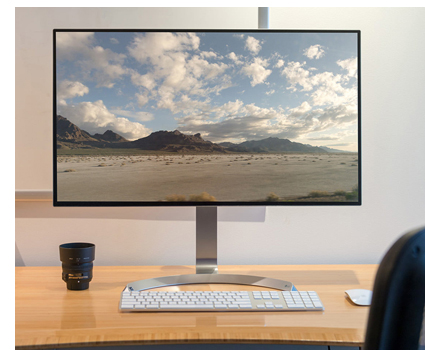Monitor Calibrating for Better Printing
 It may sound strange for a printer and copier company to suggest calibrating your computer monitor, but it’s one way to assure that the images you see on your screen will look the same when they come out of your printer (assuming the printer is also calibrated).
It may sound strange for a printer and copier company to suggest calibrating your computer monitor, but it’s one way to assure that the images you see on your screen will look the same when they come out of your printer (assuming the printer is also calibrated).
Proper monitor calibration will ensure that your colors and black levels are true, and that your monitor is producing the best results for editing, viewing and ultimately printing images.
Monitors can be professionally calibrated, but doing it yourself is relatively quick and easy, and will greatly improve the end results. With manufacturers continually developing new technologies like 4K UHD resolution, high dynamic range (HDR), and curved monitors, the importance of proper calibration is even more important.
Before you begin
Turn on your monitor and let it sit for a while before calibration so it can warm up to its normal operating temperature and conditions.
Familiarize yourself with your monitor’s display controls. They may be located on the monitor itself, on the keyboard, or within the operating system control panel.
Once you’ve found the controls, set the monitor resolution to its native, default screen resolution. If you’ve never calibrated the monitor before, those settings should already be selected.
Make sure you’re calibrating in a room with moderate ambient lighting. The room doesn’t need to be absolutely dark (in fact it shouldn’t be), but you don’t want the sharp glares and color casts resulting from any direct light.
At this point, you will want to consult the instructions that came with your monitor. PC-based monitors sometimes have different calibrating processes than MAC-based monitors. Individual manufacturers also have variable calibrating instructions.
 Calibrate using online tools
Calibrate using online tools
There are a number of web-based calibration tools that help you manually adjust your monitor settings. They usually provide you with additional and more advanced calibration options than the built-in utilities.
Calibrate using colorimeter hardware
Built-in and web-based calibration utilities are great for a quick fix, but they still rely on an individual’s perception of color. They’re only as good as your own eyes are, and most human eyes have some level of color-perception difficulties. This only gets worse with age.
Calibrating devices rely on technology, not your eyes, and therefore allow the monitor to be calibrated to its true potential. The devices are temporally attached to the screen, and “read” it while a corresponding software program puts the monitor through its steps and auto corrects as needed. These devices are not always cheap, but they will provide you with greater precision and control. For professional graphic designers and photographers, a calibrating device is mandatory.
Regardless of which calibrating method that you choose, if you print graphic-heavy items or photographs on a regular basis, it’s important to periodically calibrate your monitor.
Return to the Tech Trends Newsletter

